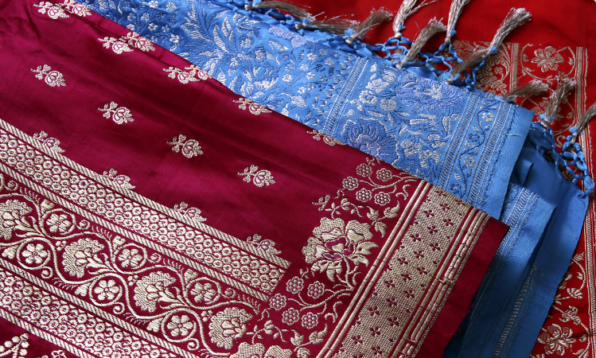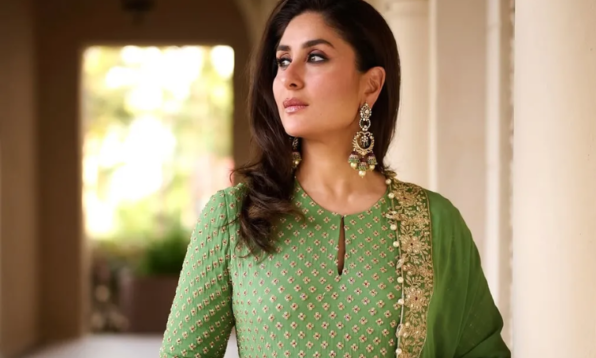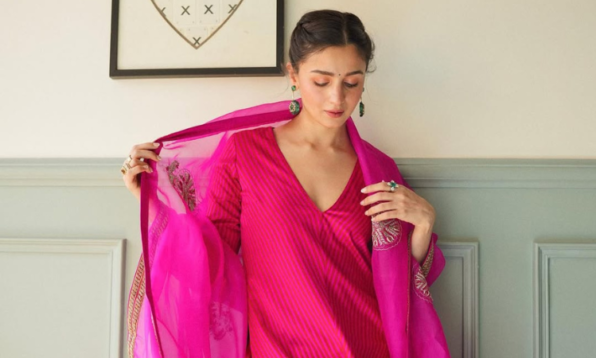Owning a collection of sarees is like curating a treasure trove of art, culture, and memories. From grand silk drapes to breezy cotton numbers, each saree has its own elegance and grace. But did you know different saree fabrics require different kinds of care? Here are a few saree-storing tips to keep your sarees as good as new for years to come.
Related: Every Saree Lover Should Know The Story Behind These 10 Traditional Bridal Sarees
Silk sarees

Silk sarees are the showstoppers of any wardrobe, but they can also be quite the divas when it comes to maintenance. Silk sarees need more care than your other sarees.
1. Wrap them in muslin cloth as silk loves to breathe, and muslin allows just that. Avoid plastic bags or synthetic covers as they can trap moisture, leading to mildew.
2. Refold every few months to avoid creases from becoming permanent and ensure even wear on the fabric.
3. Silks detest dampness. Toss in some neem leaves to keep humidity at bay.
4. Hanging silk sarees can stretch the fabric. Instead, fold them neatly and stack them in a dry cupboard. It’s best to store them separately from other sarees.
5. Always dry clean them, and if you’re choosing to wash them at home, do not dry them in direct sunlight. Also, never use water while ironing silk sarees as it may leave a stain.
Cotton sarees

Cotton sarees are your reliable companions – breathable, versatile, and comfortable. But they can lose their charm if not cared for properly. Here’s how you can keep cotton sarees in shape:
1. This is obvious but in the case of cotton sarees, it’s really important to wash and dry them well before packing them. Stains or moisture can weaken the fabric over time.
2. Store cotton sarees in soft cotton bags or pillowcases to protect them from dust. Avoid airtight plastic bags, as they can trap moisture.
3. Folding is fine, but don’t squash cotton sarees under heavier sarees. Keep them at the top of the pile to maintain their crispness. Avoid hanging as that may stretch the fabric.
4. Like silk sarees, cotton sarees need a little movement to prevent creases and fading at the folds.
Georgette, chiffon, and linen sarees

These lightweight beauties are delicate and prone to snagging, so care is key.
1. Though it’s perfectly fine to hang or fold georgette, chiffon, and linen sarees as they are light fabrics, it’s best to roll them to avoid any creases. However, when folding do not stack them underneath other clothes as this might crush the fabric.
2. When washing these sarees at home, let them drip-dry and do not squeeze them tightly.
Banarasi and zari sarees

Banarasi sarees with zari work are a symbol of opulence, but the metallic threads require special attention.
1. The zari needs ventilation to prevent tarnishing. Wrap these sarees in a soft cotton or muslin cloth instead of plastic packets.
2. Separate layers with tissue as this stops the zari threads from rubbing against each other and fraying.
3. Every few months, take zari sarees out of storage and let them breathe in indirect sunlight.
4. Don’t hang zari sarees, especially on wired hangers as it might react with the zari and tarnish it.
5. Do not use naphthalene balls with zari sarees, instead use cloves or neem leaves to make sure the chemicals do not react with zari.
Satin and velvet sarees

These fabrics ooze luxury but need gentle handling to maintain their sheen.
1. Satin and velvet can stick to themselves, so separate layers with tissue paper.
2. Heavy stacking can flatten velvet or leave marks on satin. Store them on the top of your wardrobe pile.
General saree storing tips
Regardless of the fabric, here are a few golden rules to keep in mind:
1. Use neem leaves, cloves, or cedar blocks to deter moths and insects.
2. Overexposure to light can fade colours and damage delicate fabrics.
3. If you have a large collection, labelling bags can save time when searching for a specific saree.
4. Invest in saree bags as fabric bags with zippers are ideal for keeping your sarees dust-free and safe.
By following these saree storing tips, your sarees will remain as stunning as the day you bought them. Treat them with care, and they will last generations.
Featured Image Source
Related: 8 Ways To Rock A Saree In Winter Like A Bollywood Diva

 Web Stories
Web Stories













